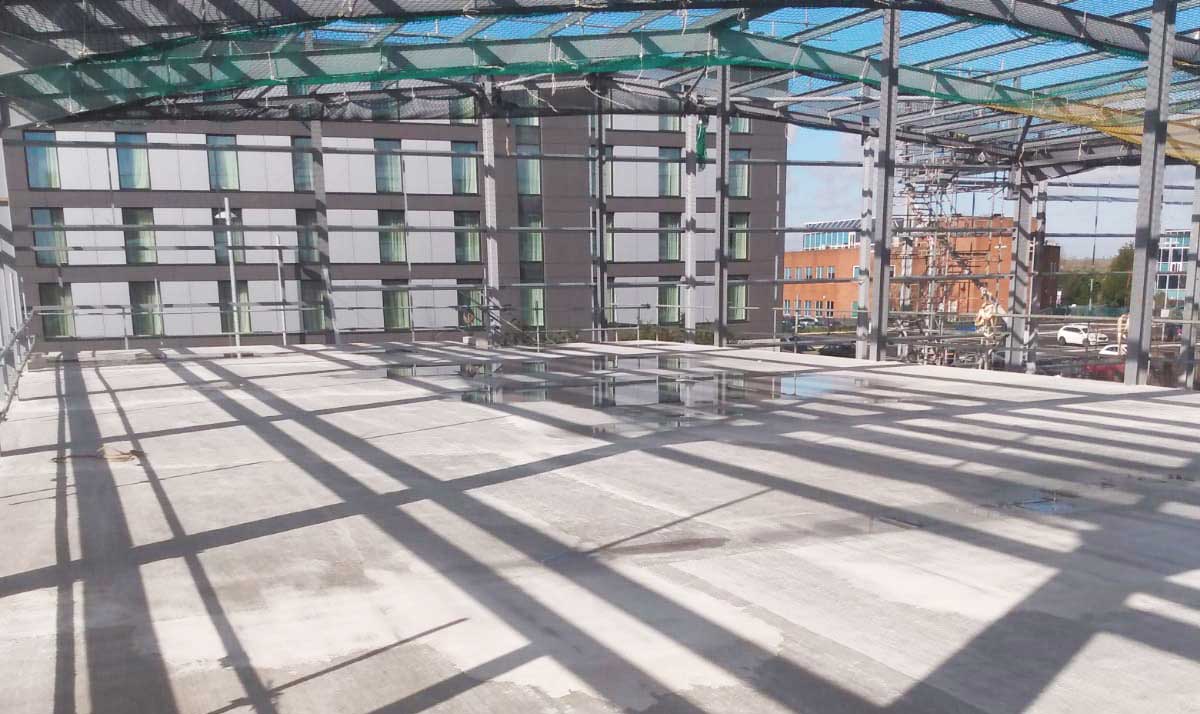High-Performance Composites for Eco-Friendly Building And Construction
High-Performance Composites for Eco-Friendly Building And Construction
Blog Article
From Waste to Wonder: Exactly How Recycled Compounds Are Transforming Numerous Applications
As industries worldwide are significantly focusing on sustainability and environmental obligation, the application of recycled composites has arised as a transformative solution across numerous sectors. From improving the efficiency of auto components to providing sustainable options in building and construction products, the applications of recycled composites are appealing and substantial. By repurposing waste products right into innovative composite structures, producers are not only minimizing their ecological impact yet additionally opening a realm of possibilities for creating durable, effective, and environment-friendly items. The effects of this change in the direction of reused compounds are profound, declaring a new age of lasting techniques and technological innovations that are improving sectors in unanticipated means (composites).
The Surge of Recycled Compounds
The boosting fostering of recycled composites in various sectors shows a growing acknowledgment of their ecological and economic advantages. Recycled compounds, obtained from materials such as redeemed carbon fiber or recycled plastics, use a sustainable option to conventional materials without endangering on efficiency. Industries ranging from automotive and construction to aerospace and customer goods are significantly transforming to recycled composites to meet their production needs.
One trick motorist behind the rise of recycled compounds is the push in the direction of sustainability and eco-friendliness. Companies are under raising stress to reduce their carbon impact and reduce waste generation. Recycled composites give an option by using materials that would certainly otherwise wind up in garbage dumps, therefore promoting a round economic climate.
Moreover, the financial advantages of utilizing recycled composites can not be neglected. These materials are often a lot more cost-efficient than their virgin counterparts, using firms a way to decrease manufacturing prices without compromising top quality. As advancements in reusing modern technologies continue to enhance, the fostering of recycled composites is anticipated to more increase across varied sectors.
Benefits in Automotive Industry

Lasting Solutions in Building And Construction
Incorporating sustainable techniques in construction jobs is vital for minimizing ecological influence and promoting long-term feasibility in the developed setting. With the construction market being among the biggest factors to carbon discharges and waste generation internationally, the fostering of lasting solutions is vital in minimizing these negative impacts. Recycled composites are playing a substantial function in transforming construction practices by offering an extra eco-friendly weblink alternative to typical structure materials.
Recycled composites, derived from products such as recovered wood, rubber, and plastic, provide a lasting choice for different construction applications. These materials not just aid in minimizing waste yet likewise use toughness, longevity, and convenience similar to conventional construction products. By integrating recycled compounds into structure styles, construction tasks can add to source preservation and power effectiveness while maintaining high performance criteria.
Moreover, using recycled composites in building and construction lines up with the expanding demand for environment-friendly buildings and lasting infrastructure. As environmental laws become stricter and the concentrate on sustainability magnifies, the building and construction market is significantly turning to recycled compounds as a sensible solution for producing eco-conscious structures and structures.
Eco-Friendly Innovations in Packaging
Biodegradable materials such as mushroom packaging, seaweed-based films, and compostable plastics provide appealing remedies to the plastic pollution situation. These cutting-edge her comment is here products not just decay normally, lowering environmental influence, yet additionally give equivalent performance and durability to typical product packaging choices.
Furthermore, the assimilation of recycled materials into product packaging production processes additionally boosts sustainability efforts. By integrating post-consumer recycled web content, firms can reduce the demand for virgin products, preserve natural resources, and promote a circular economic climate in the product packaging industry.
Changing Textiles With Recycled Composites
In the world of sustainable products, the focus now changes towards changing textiles with the innovative usage of recycled composites. This evolution in fabric production is driven by the pushing requirement for even more environment-friendly practices in the style and textile sectors. Recycled compounds offer an encouraging remedy by integrating materials like plastics, carbon fiber, and glass fiber to develop long lasting and versatile textiles.
Among the key benefits imp source of using recycled compounds in textiles is the capacity to repurpose waste materials that would or else wind up in landfills. By integrating recycled components into materials, manufacturers can minimize their ecological influence and add to a much more circular economic situation - composites. Additionally, fabrics made from recycled composites frequently exhibit boosted efficiency, strength, and resilience features, making them excellent for a vast array of applications
As customer need for lasting items proceeds to climb, the fostering of recycled compounds in fabrics is positioned to expand significantly. This shift towards more eco-friendly fabric manufacturing not just profits the earth yet additionally opens brand-new chances for advancement and imagination in the style and fabric markets.
Final Thought

From boosting the performance of automotive parts to using sustainable alternatives in building and construction materials, the applications of recycled composites are substantial and appealing. Recycled compounds, obtained from products such as recovered carbon fiber or recycled plastics, offer a sustainable alternative to typical materials without endangering on efficiency. Additionally, the use of recycled compounds promotes the round economic situation by diverting waste from garbage dumps and reducing the requirement for virgin raw products - composites.Recycled composites, derived from products such as recovered timber, plastic, and rubber, offer a lasting alternative for various building and construction applications.In the world of sustainable products, the emphasis now moves in the direction of changing textiles with the ingenious usage of recycled compounds
Report this page